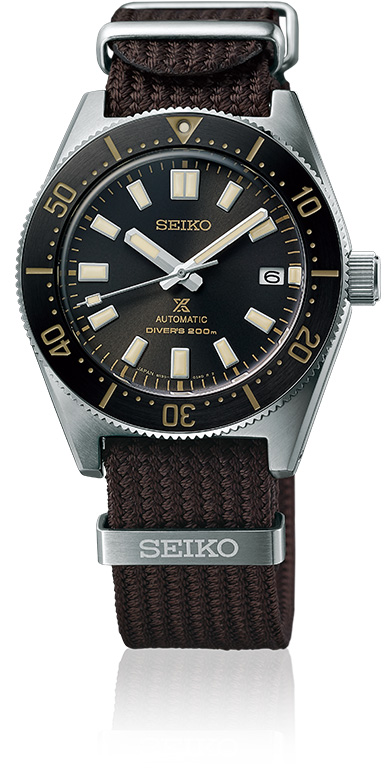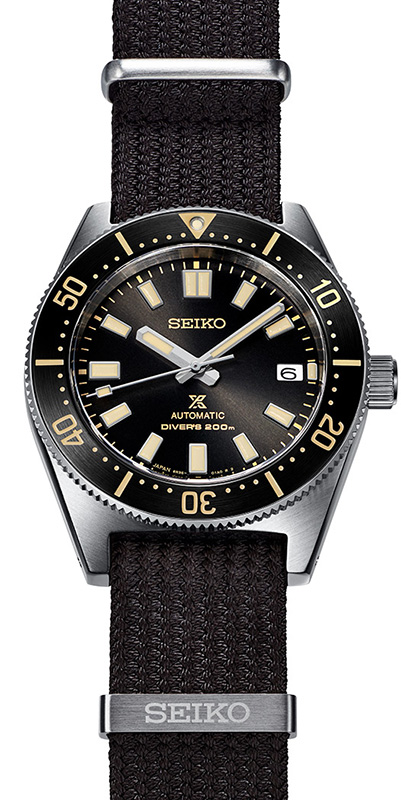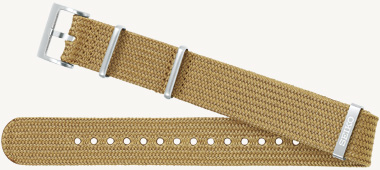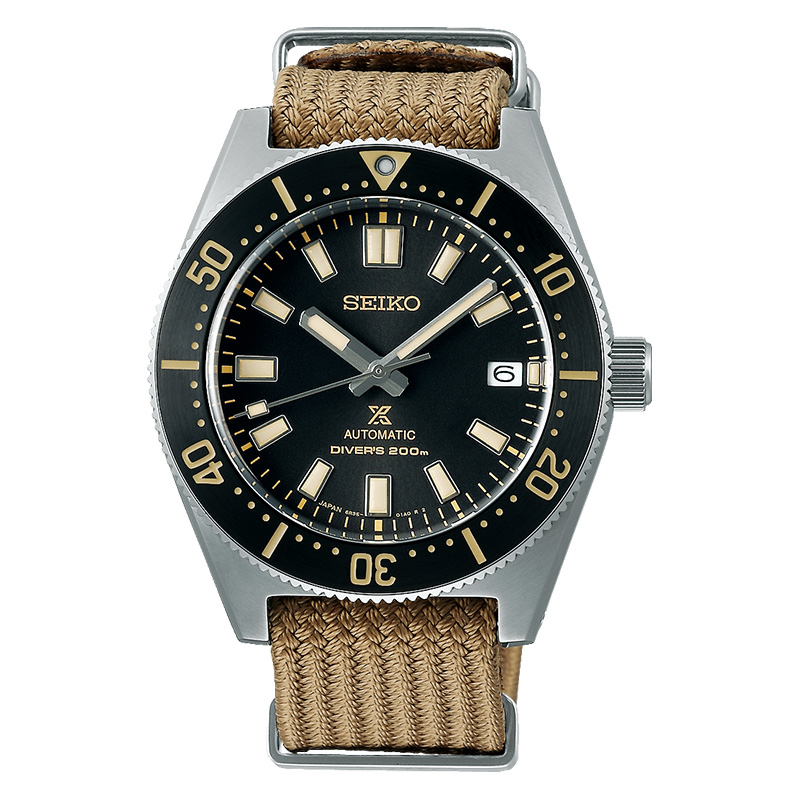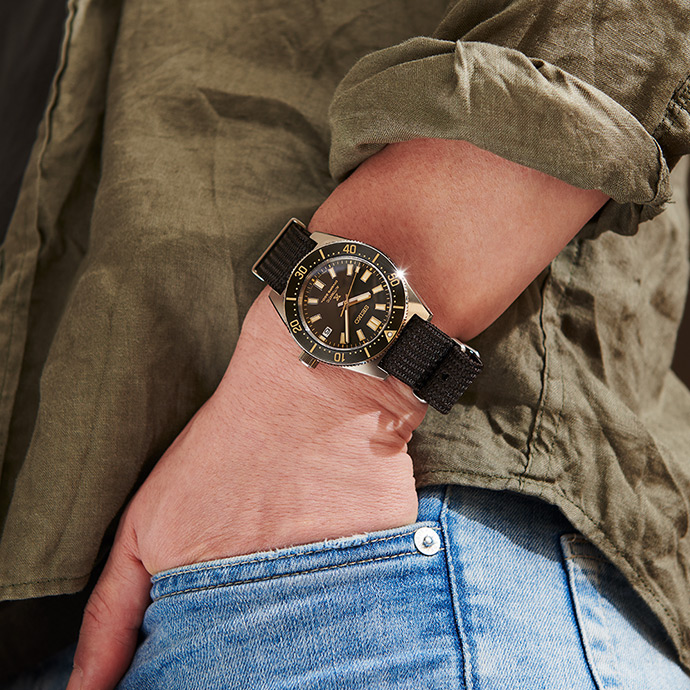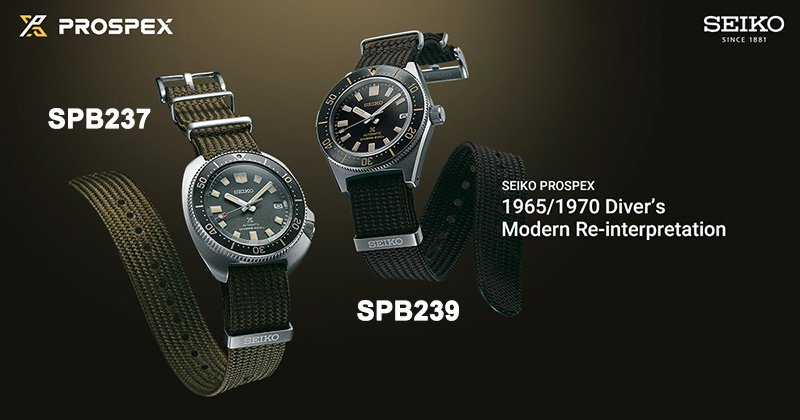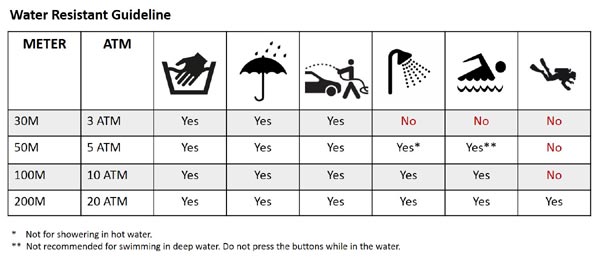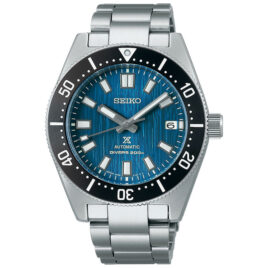Description
SEIKO Prospex SPB239J1 Specifications :
| Feature |
| |||
|---|---|---|---|---|
| Driving system | Automatic with manual winding | |||
| Caliber Number | 6R35 | |||
| Case material | Stainless steel with super hard coating | |||
| Case back | Solid | |||
| Band type | Strap | |||
| Band material | Polyester | |||
| Band color | Dark brown and additional camel strap | |||
| Band width | 20 mm | |||
| Clasp | Buckle | |||
| Dial color | Black | |||
| Glass material | Curved sapphire crystal with anti-reflective coating on inner surface | |||
| Hands | Cream silver tone (hour, minute, second) | |||
| Dial markers | Cream silver tone baton indexes with double batons at 12 o’clock | |||
| Second markers | Minutes markers around the outer rim | |||
| Lumi Brite | Hands, indexes and bezel | |||
| Bezel | Unidirectional rotating black colored stainless steel with arabic numerals minutes markers per 10 minutes scale | |||
| Crown | Screw down at 3 o’clock position | |||
| Calendar | Date display at 3 o’clock position | |||
| Function | Date, hour, minute, second hand | |||
| Accuracy | +25 to -15 seconds per day | |||
| Vibration | 21,600 vibrations per hour (6 beats per second) | |||
| Drive duration | Approximately 70 hours | |||
| Magnetic resistance | 4,800 A/m | |||
| Water resistance | 200 m / 660 feet water resistance suitable for air diving | |||
| Size | Length : 47.6 mm x Diameter : 40.5 mm x Thickness : 13.2 mm | |||
| Weight | 106 g |
SEIKO Prospex SPB239J1 Features :
- Date display
- 24 jewels
- Screw case back
- Screw-down crown
- Unidirectional rotating bezel
- Stop seconds hand function
Seiko Prospex SPB239J1 is 1965 Diver’s Modern Re-interpretation

Ever since Seiko’s first diver’s watch was introduced in 1965, the company has continuously pushed back the boundaries of what diver’s watches can offer. Today, Seiko introduces in the Prospex collection two modern re-interpretations of landmark timepieces from 1965 and 1970 that are presented on special fabric straps designed and manufactured expressly for diver’s use. The two watches strike the perfect balance of design and function and embody the innovative spirit for which Seiko’s diver’s watchmaking is renowned.
Design
Both creations share the same design and specifications as the 1965 and 1970 modern re-interpretations introduced last year in celebration of the 55th anniversary of Seiko’s first diver’s watch. The brown dial and bezel of the 1965 re-interpretation and the textured gray dial of the 1970 re-interpretation perfectly harmonize with the earth color tones of their fabric straps.

Original model

The 1965 diver’s watch incorporated an automatic mechanical caliber and delivered 150m water resistance. The watch was designed for maximum reliability and legibility in the harshest conditions and proved its reliability when used in the Antarctic during the 60s and laid the path to the development of future landmark watches.
Fabric strap
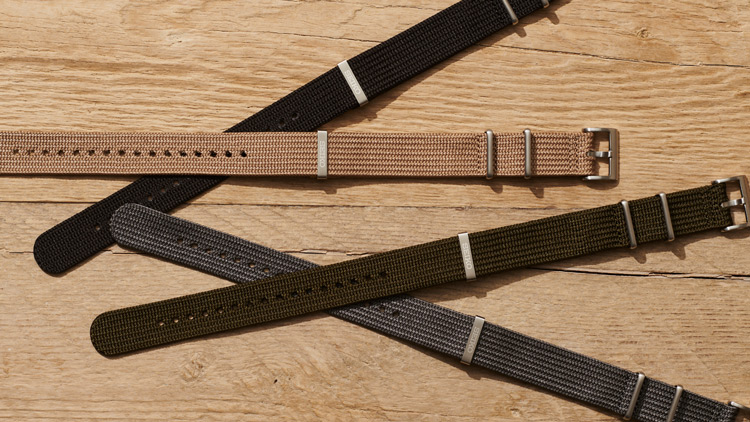
The fabric straps incorporate a traditional braiding technique from Japan called Seichu. Their rich texture and color complexion are familiar in Japanese culture for their use in fabric designs, as seen in a traditional “obijime,” the decorative cord that holds a Kimono sash in its place. The straps present a uniquely Japanese aesthetic and texture and are specially manufactured to have a tensile strength nearly four times that of regular Seiko fabric straps*. Their strength and resistance to degradation caused by exposure to sunlight, meet the demanding standards of Seiko’s diver’s watches and are perfect for use under water. In addition, thanks to its unique braiding pattern, the straps have the flexibility and air permeability that ensure maximum comfort on the wrist. *based on research conducted by Seiko.
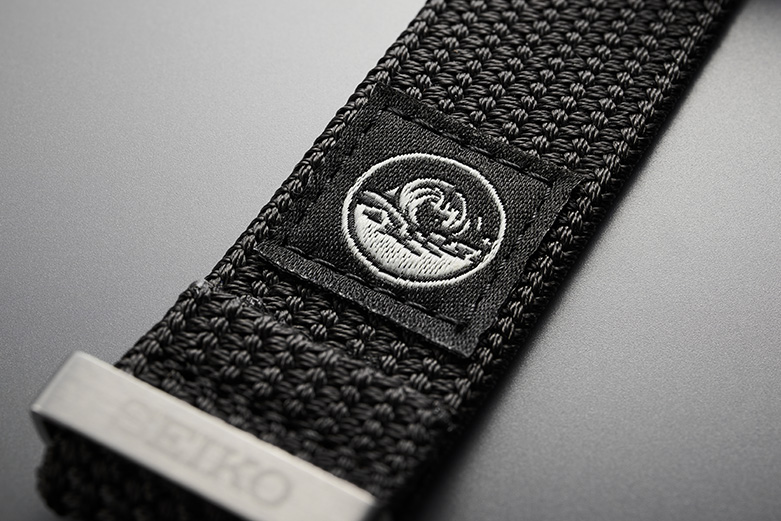

The metal parts of the fabric strap’s construction have a strong and solid form giving a dignified diver’s watch feel to the contemporary creations.
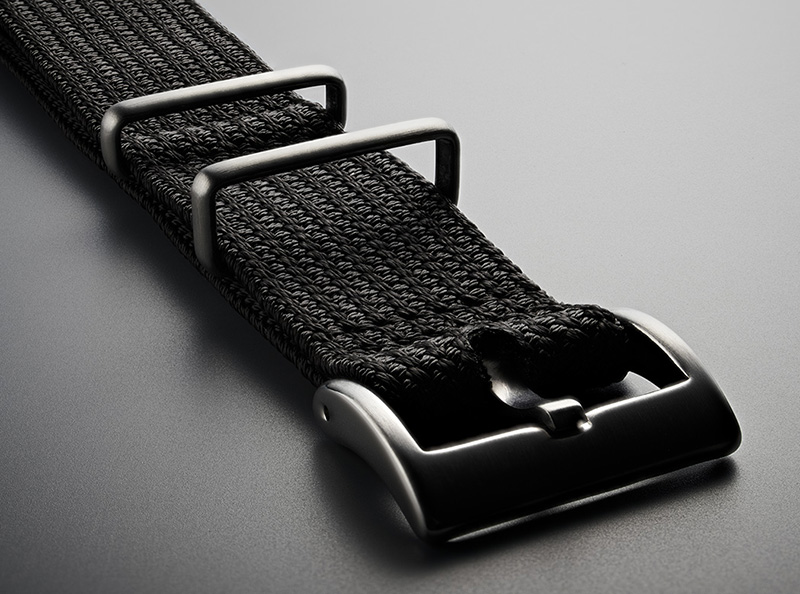
About Seiko Prospex Sea Diver SPB239J1
From the introduction in 1965 as Japan’s first diver’s watch, the engineers never stopped to innovate. The trust this watch has gained goes beyond the borders of Japan and into the world. Because of that, Seiko facilitated the establishment of the standard for diver’s watches in International Standard Organization (ISO), and Japan Industrial Standards (JIS). As for the ISO, Seiko lobbied the organization to amend the standard to match the actual use of diver’s watches in the deep sea. In 1996, ISO6425 with annex, about diver’s watches for mixed gas diving, was issued. Moreover, Seiko’s relentless challenge and innovation have driven the company to create a model that could truly be called authentic.
Behind Seiko’s diver’s watch that has been chosen by divers world wide, there are qualified engineers who work to developed technology that the world has never seen.
First, through significant innovation, water resistance and impermeability has proven to be the finest in world class. Above all, along with functionality, using specialized material and precise detail in structure, the timepiece is made to perfection. In addition, Seiko’s determination and innovative technology resulted in many patents to preserve the company’s authenticity.
Since then, there are countless products labeled as a diver’s watch around the world but only a negligible number of these timepieces are functional in professional environments.
History of Seiko Prospex Sea Diver SPB239J1
Introduced in 1965, Seiko’s innovative diver’s watch has been chosen by divers and adventurers globally. In other words, Seiko’s diving watch has become a global standard as a result 50 years of innovation.
Everything started with a letter from a professional diver in Hiroshima prefecture of Japan. However, the diver explained that in depths greater than 300 meters, when using a diving capsule and saturation diving techniques, most watches get damaged. Answering this request, Seiko established a new development team. Then after years of research development, the world’s first Professional Diver’s 600 m with titanium case was created.
In conclusion, with half a century of history and remarkable innovation, Seiko’s diver’s watch has been used all over the world in diverse situations. Therefore, over the years, the timepiece has proven itself worthy of any harsh environment and has been praised from professional divers.
Progression of Seiko Prospex Sea Diver
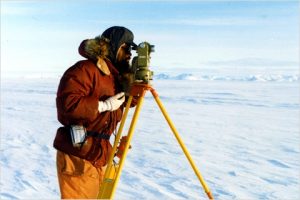
Earning credibility through vigorous adventures in the North and South Pole.
From 1966, the timepiece has been brought on 4 missions with the Antarctic Team of the Geospatial Information Authority of Japan. Later on, numerous adventurers and explorers have made achievements such as successfully ascending Everest gearing Seiko’s diver’s watch. After years of proving itself worthy of withstanding extreme environments, Seiko’s diver’s watch has earned its integrity.
 |  |
Exceeding any expectation of water resistance with the depth of 1062 meters.
In May of 1983, two Professional Diver’s 600 meters were mounted on Shinkai 2000, a research submersible used by JAMSTEC (Japan Agency for Marine-Earth Science and Technology). The watch was originally intended for use up to 600 meters, yet the timepiece withstood water pressure at a depth of 1062 meters. As a result, the watch’s legibility, precision, and exterior remained unscathed, continuing to strengthen its credibility.
Courtesy: JAMSTEC
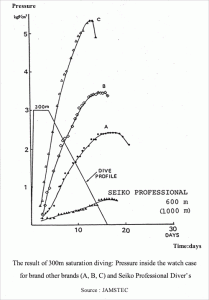
The result of 300m saturation diving: Pressure inside the watch case for brand other brands (A, B, C) and Seiko Professional Diver’s
The vertical line shows the pressure inside the watch case and the horizontal line indicates the period of time.
After the dive, the air pressure inside the watch case gradually went up.
Seiko Professional diver’s scored the best result and verified that it is strong enough to function even at great depths.
Proving its significant impermeability.
For saturation diver’s watches, helium is a constant issue. That is to say, the gas penetrates the glass, and in some cases the difference in external and internal air pressure causes the glass cover to break. While other companies focus on methods to release Helium with an escape valve, Seiko took a different turn and developed a glass case that is practically impermeable to Helium gas. This is the creation of Seiko’s Diver’s Professional 600M. Then, in 1983, JAMSTEC conducted an impermeability test by submersing several diver’s watches under 300M saturation diving. Consequently, Seiko’s Diver’s Professional 600M proved to be up to ten times more impermeable to Helium gas compared to other companies. In short, the true diver’s watch continues to prove itself.
Courtesy: JAMSTEC
History of Seiko
The company was founded in 1881, when Kintarō Hattori opened a watch and jewerly shop called “K. Hattori” (服部時計店 Hattori Tokeiten) in the Ginza area of Tokyo, Japan. Eleven years later, in 1892, he began to produce clocks under the name Seikosha, meaning roughly “House of Exquisite Workmanship”.
The first watches produced under the Seiko brand appeared in 1924. In 1969, Seiko introduced the Astron, the world’s first production quartz watch, it cost the same as a medium-sized car. Seiko later went on to introduce the first quartz chronograph.


